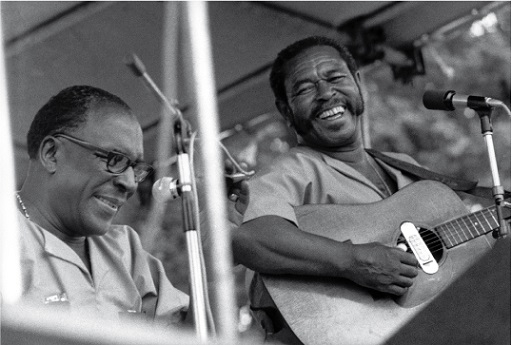4 Identifying verses

Having identified the eight instances of the chorus in ‘Midnight Special’, you will next identify the verses. Remember that verses have the same musical material as one another, but different words.
Activity 3
Listen again to ‘Midnight Special’, this time to identify the song’s verses. Using the text box below, write down the track time at the beginning of each verse (use the format 00:00), as well as a few words from the beginning of each verse.
Discussion
There are at least two ways to perceive the verses. One is to hear five verses, as shown in Table 2.
| Track time | Lyrics |
|---|---|
| 00:21 | Yonder come Miss Rosie ... |
| 01:01 | When you get up in the morning ... |
| 01:41 | If you ever go to Houston ... |
| 02:20 | When you get up in the morning ... |
| 03:10 | I was standing at the station ... |
However, about halfway through each of these five segments, the musical material (parts of the vocal melody and guitar accompaniment) seems to repeat. Keeping in mind that in verses, the music repeats but the lyrics are new, it is also possible to identify ten rather than five verses. This interpretation is shown in Table 3.
| Track time | Lyrics |
|---|---|
| 00:21 | Yonder come Miss Rosie ... |
| 00:30 | Umbrella on her shoulder ... |
| 01:01 | When you get up in the morning ... |
| 01:10 | No forks on the table ... |
| 01:41 | If you ever go to Houston ... |
| 01:50 | That cop will arrest you ... |
| 02:20 | When you get up in the morning ... |
| 02:30 | Flapjacks and molasses ... |
| 03:10 | I was standing at the station ... |
| 03:19 | When that train was leaving ... |
At this early stage, it would be fine if you arrived at either conclusion identified in the discussion. This said, the argument is a little better for hearing five verses than ten. In the first place, the ‘half verses’ are always heard in pairs and never on their own; the chorus never appears after a ‘half verse’. Second, each of the five ‘full verses’ stands on its own as an independent narrative unit: Miss Rosie attempting to get her man out of prison; breakfast in prison; trouble with the police in Houston; breakfast in prison (again); saying goodbye to Miss Rosie.
As this suggests, the definitions of verses and choruses provided earlier may need qualification. In Section 1, you read that verses have the same musical material as one another, but different words. This can now be revised: in determining where a verse begins and ends, you should also take into account other aspects of the song, including the meaning of the lyrics. More generally, it is helpful to conceptualise form in larger, rather than smaller, groupings, since this helps a broader picture to emerge from the detail.
